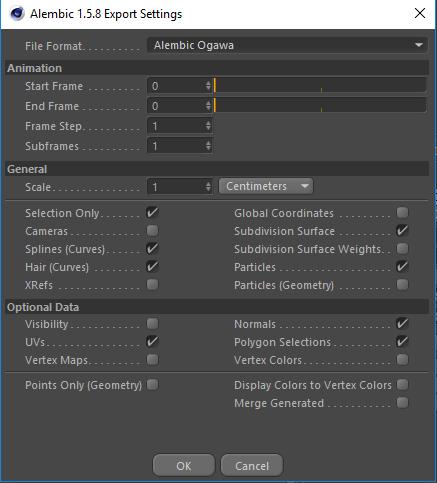
OctaneRender Standalone Edition can import and render hair or fur geometry. Hair and fur data is usually retrieved from an AlembicAn open format used to bake animated scenes for easy transfer between digital content creation tools. file, which may or may not include a strand thickness value or a gradient attribute. If the thickness value or the gradient attribute or both are not provided, Octane respectively creates the attribute for the hair gradient and bases the strand thickness according to the default value set in the Import Preferences dialog.
The Alembic file may come from different 3D modelling applications and it may contain geometry derived from the application’s native hair primitive in the form of hair guides. The hair guides are then exported for use in Octane Standalone Edition in conjunction with its proxy system for replicating and scattering the hair guides to create custom hair and fur effects. Users may also generate hair or fur via third-party geometry scatter plugins such as Ornatrix.
Here is a typical export setting while exporting hair guides into an Alembic file from Cinema 4D:

When the alembic file is imported into the Octane, the geometry that appears are actually the hair guides.
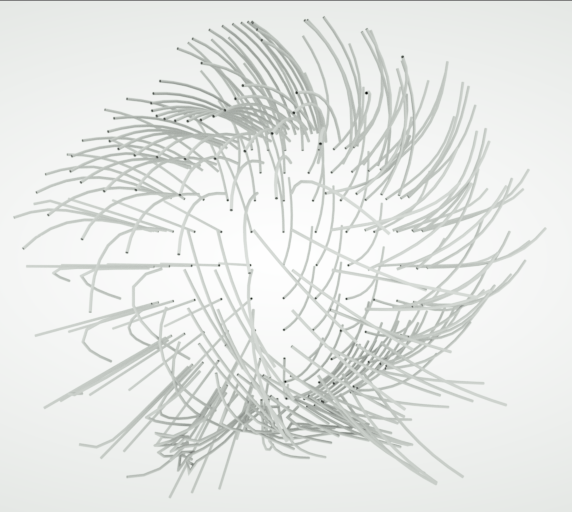
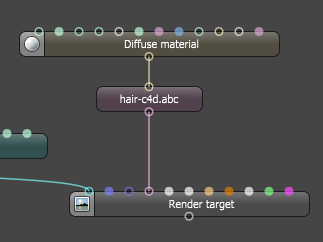
The hair guides may then instanced using Octane’s instancing and scattering features, without using too much GPUThe GPU is responsible for displaying graphical elements on a computer display. The GPU plays a key role in the Octane rendering process as the CUDA cores are utilized during the rendering process. memory. For more information, refer to the section on InstancingInstancing an object means taking a single imported mesh object, such as an OBJ or an FBX and making multiple copies, each of which can be placed in different parts of the scene. This saves an enormous amount of computational resources because only a single object is loaded into the scene. in this manual.
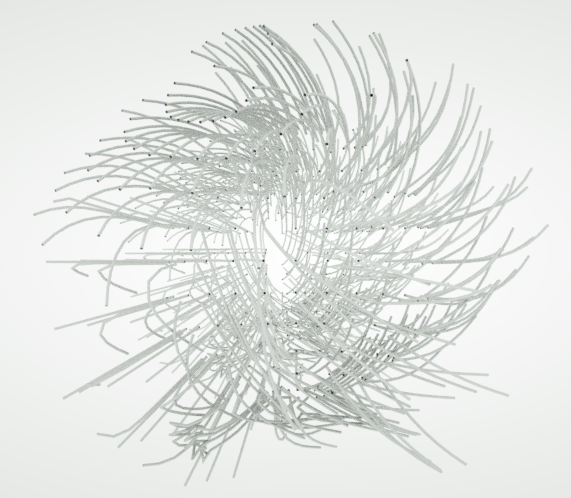

Alternatively you may use a csv file as input for the transforms. For more information, refer to the section on ScatteringDefines how fast light gets scattered when traveling through the medium. in this manual.
The material is then further improved, by using a W Coordinate texture, you can place a gradient for each strand.
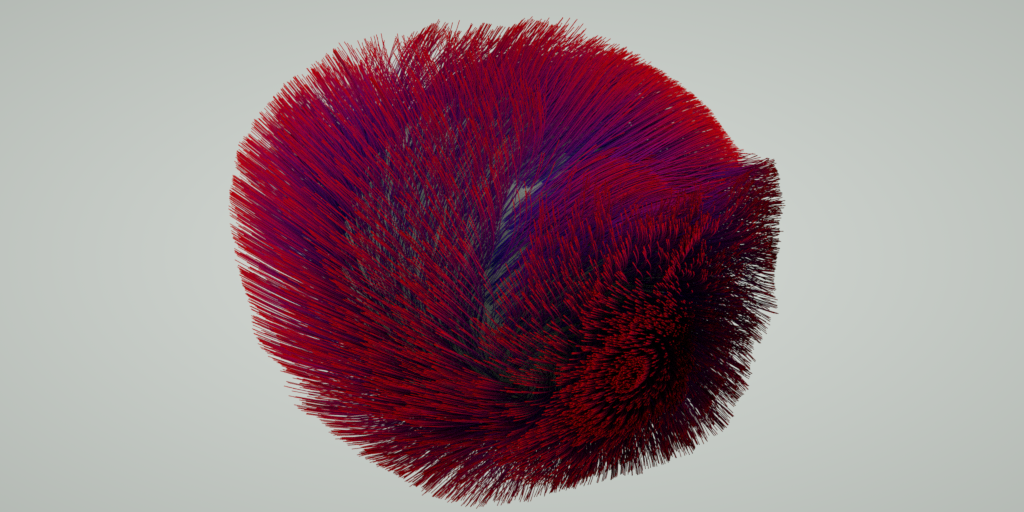
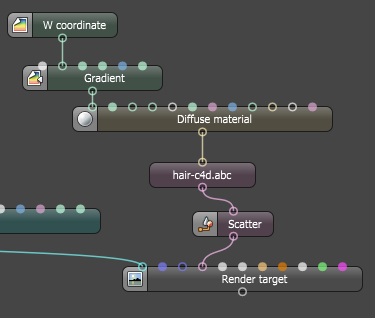
For the next example that follows below, the Alembic file is generated by a scattering plugin called Ornatrix. The resulting alembic file in this case already has hair data for hair guides and the transforms used for scattering the strands.
The first step is to import the Alembic file containing the hair geometry by right clicking on the Nodegraph Editor and selecting the Scene option.
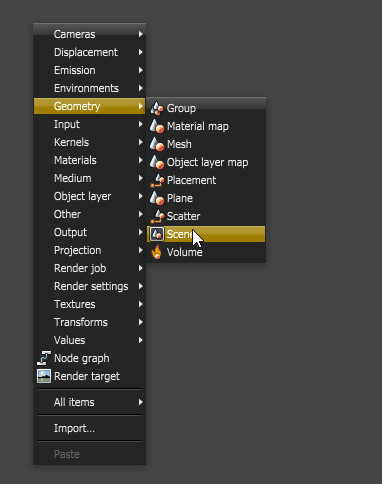
Once the hair geometry has been imported into the Octane Standalone, the existing materials from the Alembic file may be used if present or Octane materials may also be added if preferred.
Hair And Fur Gradients
By this time, the attribute for the hair or fur gradient would have already been loaded from the Alembic file or automatically created and appended to the mesh node. This attribute defines a “W” coordinate for every hair vertex and provides the ability to place a gradient along the hair or fur segments. For more information about this attribute, please refer to the section on the W Coordinate texture.
To place a color gradient to hair or fur, create a "W coordinate" texture and use it as input texture of a gradient texture or a mix texture or something else, like this for example: